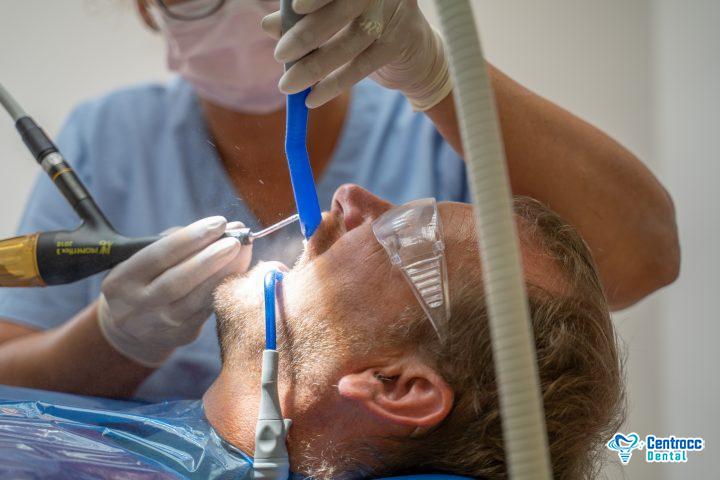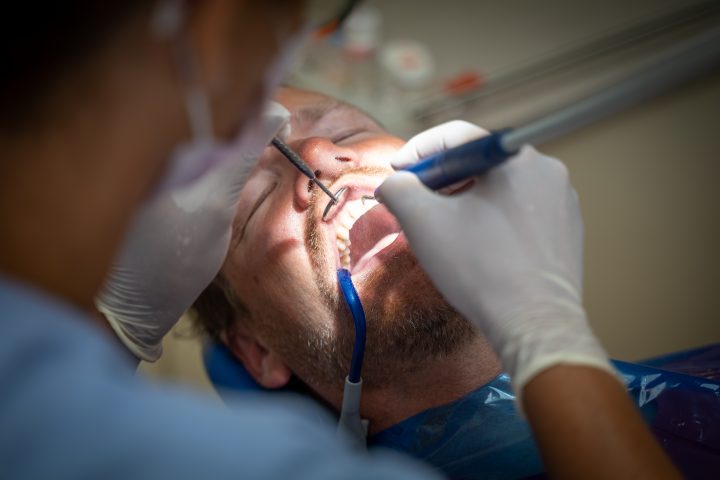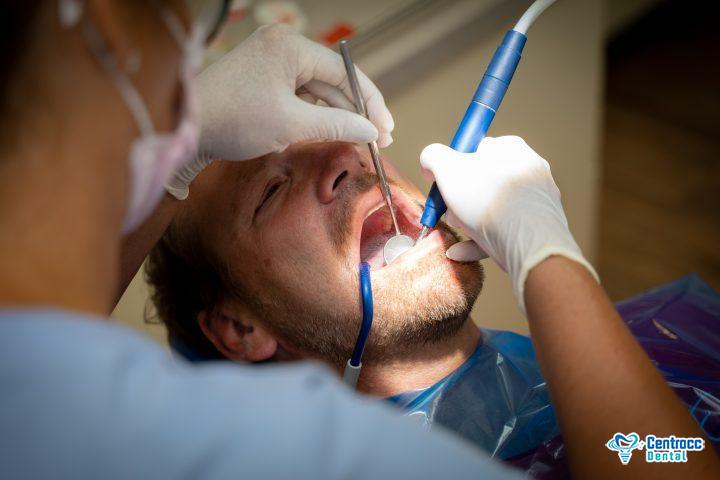Tartar is calcified dental plaque that can no longer be removed with a toothbrush.
Why is tartar dangerous?
Tartar has a rough surface, so it provides a fertile ground for the colonization of bacteria and the development of gingivitis and gum disease. Bacteria in tartar maintain constant inflammation. Signs of gingivitis include swollen and bleeding gums. Over time, gingivitis spreads to the bone structure as well, hindering its ability to stabilize the teeth. As a result of this inflamed condition, the bone breaks down around the teeth and the teeth lose their stability which, if untreated for years, can lead to tooth loss.
What is tartar removal?
During the procedure, our qualified clinical dental hygienists use an ultrasound device and special mechanical tools to remove plaque, tartar and discoloration from the teeth. The process is complemented with intraoral sandblasting which also removes discoloration from hard-to-reach surfaces.
Is tartar removal painful?
Tartar removal is a completely painless procedure.




